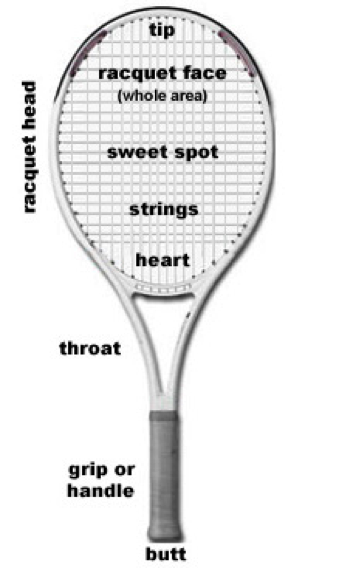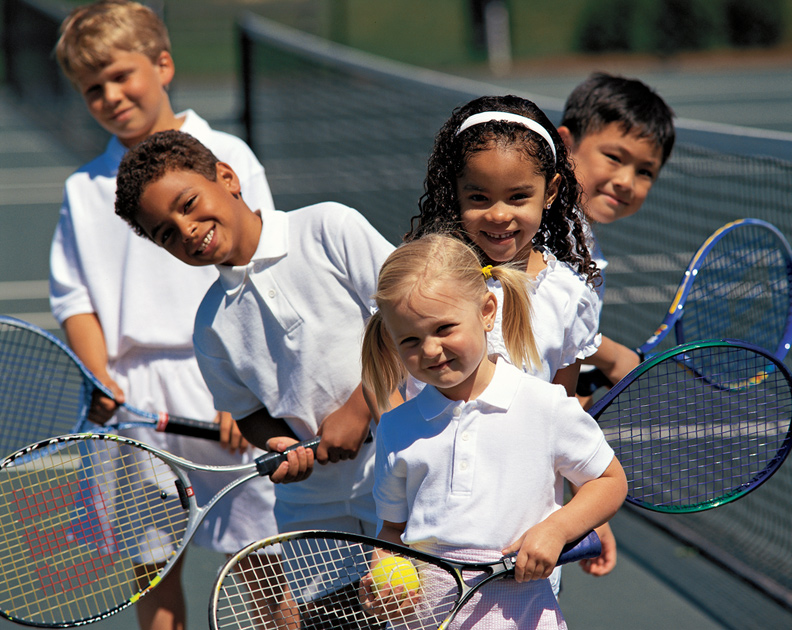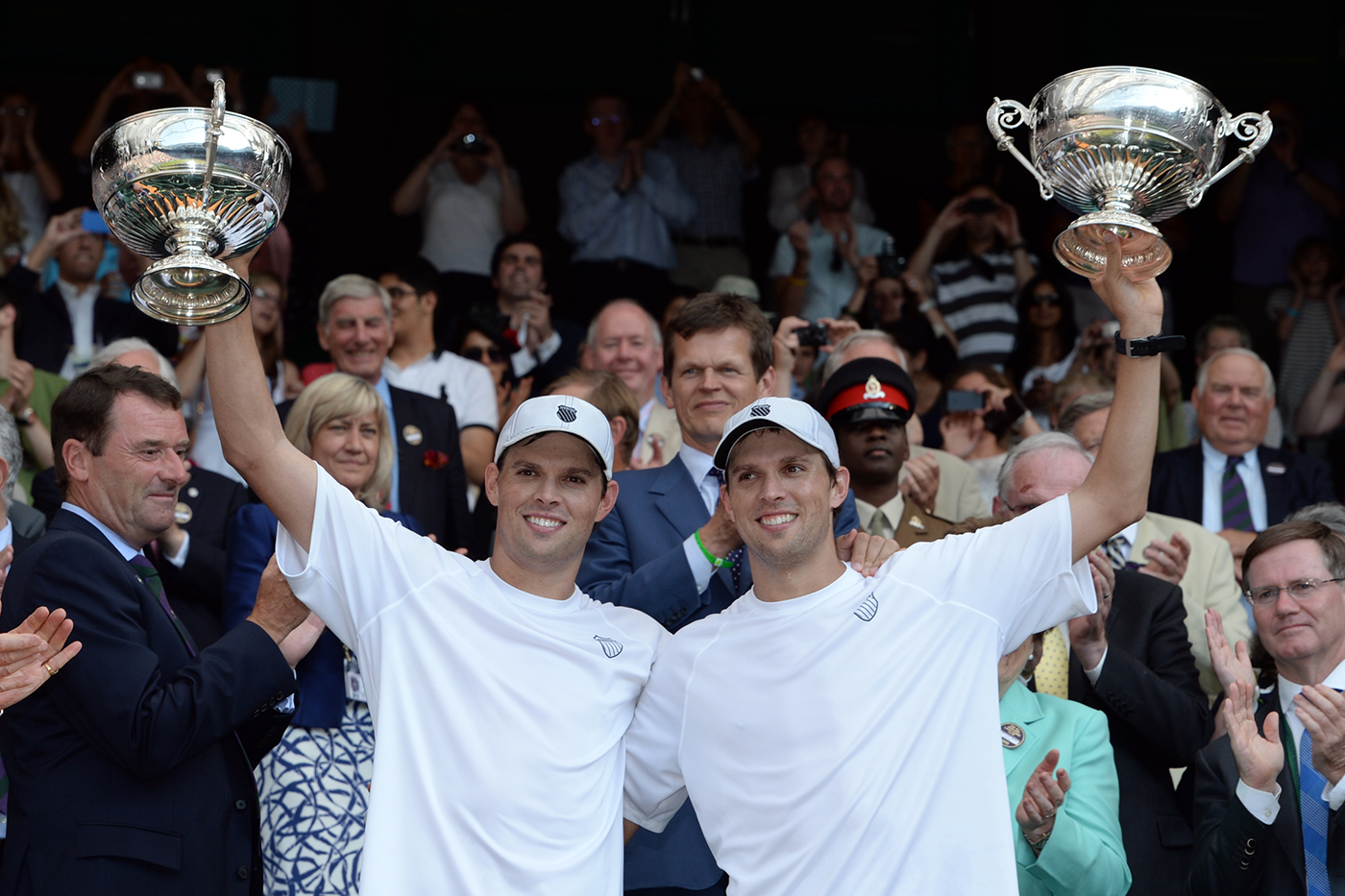You’ve finally found the BEST activity for your child!
Now that your kids are back in school, you’re probably searching for after school activities. With all the options, finding the right one can cause a headache.
While your kids might be happy to just plop in front of the TV, that doesn’t allow them to enhance their mental, social and physical development
What touches on all of the above? Tennis.
Top 5 Reasons Playing Tennis Is Better Than Soccer
In the recent years tennis has become an increasingly popular choice for parents with young children because it has many unique benefits that aren’t as prominent in team sports–like soccer.
1. Mental Development
Have you ever heard someone say tennis is 90% mental?
Think of a tennis court like a big chess board. The game is a bit more complicated than most sports and to have success it requires some strategic thinking. There’s no teammate to lean on so you’ve got to figure it out for yourself.
Is your child an independent thinker? The necessity to build strategic thinking skills on the tennis court often accelerates a child’s ability to problem solve. As a result, many children that play individual sports show accelerated mental development in the frontal lobe of their brain – the section of the brain associated with reasoning, planning, and problem solving. In other words, tennis is good for your child’s mental development both on and off the tennis court.
2. Social Development
In addition to making your child smarter, what’s beautiful about tennis is that because it is an individual sport it refines their social skills through a lot of one-on-one human interaction.
Is your child shy? Children who are timid often develop social skills quicker and become more outgoing through individual sports like tennis because the social interaction is more necessary. Having to call out the score and play against someone is a much more intimate setting that sparks social interaction compared to soccer where you will blend into the crowd.
3. Physical Development
Perhaps the most obvious benefit of tennis for your child is physical development.
Does your child need work on their hand-eye coordination skills? Close to 1 in every 10 children have noticeable hand-eye coordination issues and, in most cases, these problems don’t go away on their own. Studies have shown that children who struggle with these issues at age 5 often still have similar issues at age 9.
The term hand-eye coordination is your body’s way of processing information through the eyes, then using it to direct the movements of the hands. Hand-eye coordination starts developing in infancy, and is needed for everyday tasks like getting dressed, eating, handwriting, and tying your shoes.
You can aid in the development and progression of your child’s hand-eye coordination by engaging them in activities that require them to fine tune their basic motor skills. Tennis is one of the few sports that requires a lot of “moving parts” and can quickly excel a child’s hand-eye coordination at a very young age.
4. Safety
More than 38 million American children play organized sports. The bad news? Nearly three million of them a year visit emergency rooms with sports injuries that can range from broken bones to more serious head injuries. Soccer is ranked among the most dangerous sports. Player collisions — either full body or kick collisions — can cause a wide range of injuries, including cuts, bruises, and concussions, which have been a hot topic among parents lately.
5. Lifetime Sport
When choosing an activity for your child, think about the longevity of the sport. Sports like soccer are physically demanding and also require a large group of people—both of which are hard as adults. But tennis you only need two people to play and it can be as physical as you want it to be. It’s not uncommon to see a group of seniors playing tennis in the park. When is the last time you saw a group of seniors playing soccer?
 Improve Your Child’s Coordination At Home
Improve Your Child’s Coordination At Home
Playing tennis involves several skills that all contribute to good hand-eye coordination; agility, balance, coordination, and speed and reaction time.
Agility refers to the ability to quickly change your body’s position and move in opposing directions in an efficient and effective manner. Tennis is comprised of side to side, up and back, and diagonal movement. This constant change in direction forces the body to learn to adapt its movement to get in position to hit the ball.
Balance is being able to maintain equilibrium, or control your body’s position in space. It is one of the most important aspects of learning tennis because you have to be in the correct position to hit the ball. On top of good footwork, you also have to be balanced once you get to the ball to swing the racket and make contact.
Coordination incorporates senses such as sight and hearing in conjunction with body parts to perform tasks accurately and efficiently. Not only is your body moving in all different directions while playing tennis, but you have to be able to swing a racket and hit the ball at the same time.
Speed is how fast you can complete a movement or task within a short period of time, while reaction time, a subcomponent of speed, refers to the time it takes to respond. Both are big components of tennis because you need to be fast and be able to react quickly to the ball coming at you.
Did you know you can help your child improve their coordination at home?
Follow this easy 45 minute lesson plan that will improve your child’s motor skills in an engaging way, and at the same time get them interested in tennis!
This simple progression is designed for anyone to “teach”—not just tennis professionals. All you need are 2 rackets, 2 balls, and some open space. The key is to keep it simple, the drills short, and make it fun.
When you see + or ++ (plus signs) I’ve added a tips on how to make the exercise more challenging

Begin Without a Racket
1. Toss n’ Catch
(5 minutes)
Stand across from each other, one person on the doubles sideline and the other person on the singles sideline. Underhand toss the ball back and forth 10 times.
+Start at the baseline and move sideways down the doubles and singles sidelines towards the net, tossing the ball underhand at the same time.
++Use two balls. You will have to practice communication at the same time. For example, say “1-2-3 toss.” Both toss the ball at the same time and catch the other person’s ball. Add the sideways movement if possible.
2. Sky’s the Limit
(5 minutes)
Stand across from each other with the net in between you. Toss (or hit with your racket) the ball high in the air to your child and yell a number. That number tells them how many times the ball must to bounce before they can catch it.
+To work on their body positioning in relation to the ball, add a rule that they have to be behind the ball facing you when they catch it.
3. X Marks the Spot
(5 minutes)
Make a center mark (or, recovery spot). Keep the net in between you and toss the ball to one side. When the ball bounces, you both say “bounce” and as your child catches it, you both say “catch”. After they catch the ball, they have to recover back to the center mark.
+When you toss it to the right, they have to catch the ball with just their right hand. Toss the ball to the left, and they have to catch the ball with only their left hand.
With a Racket
Kid’s tennis rackets range from 19 to 26 inches in length for players between 3 and 12 years old. It’s very important to get the correct size racket otherwise they won’t be able to hit the ball, which will result in them not wanting to play. When looking for a starter racket, the general rule is the length of the racket should be the distance from fingertip to ground when standing upright. If it’s not exact, always go smaller rather than bigger.
4. Round of Applause
(5 minutes)
Each of you put the tennis racket on the ground in front of you. Start by tossing the ball up in the air. Before catching the ball, clap once. After you master one clap, try two and so on.
+You can be creative and clap behind your back or under your leg or even spin around before catching the ball.
5. Sweet Spot
(5 minutes)
With the racket in front of you, bounce the ball off the strings of the racket and catch it. Aim for the center of the strings, or the “sweet spot”.
+You can add movement by bouncing the ball off the strings of the racket and moving around the outside of the racket at the same time. Change directions.
++Do the same drill, but use only one hand to bounce and catch the ball. Add movement around the racket.
6. Walk the Dog
(5 minutes)
Have your child pick up the racket. With the ball on the ground, have them push the ball around the court trying to keep the ball on the lines.
+Set up cones or some obstacles for them to go around and through.
7. Around the World
(5 minutes)
Holding the racket with their palm facing the sky, put the tennis ball on the strings. Have them try to roll the ball around the “face” of the racket without the ball falling off the strings.
+Have them change direction every time you clap.
8. Red Light, Green Light
(5 minutes)
Put your child on the baseline while they balance the ball on the strings. Play the game “Red Light, Green Light” to the net. (Red light means stop, green light means go). If the ball falls off their strings, they have to start at the beginning.
9. Bounce and Hit
(5 minutes)
At this point, your child is probably dying to actually hit the ball. Have them stand sideways with their racket back. Holding the ball as far away from their body, have them simply drop the ball from their hand and say “bounce” when it bounces, and “hit” as they make contact.
+Stand across from your child to give them a target. Every time you catch the ball, it’s 1 point. Play to 5 points.
How PlayYourCourt Makes Learning Tennis Easy
Convenient
Are you sick of spending all your time driving your kids all over the place? PlayYourCourt makes it easy by sending coaches to the court of your choice for lessons. Do you have a court in your neighborhood or local community? You can request the coach to meet you there.
Affordable
Tennis sometimes has the reputation as an expensive sport, but in fact it’s very affordable. Our rates are generally $10-15 cheaper than your local club. Want to create a group? We can send a pro to you for group lessons, making lessons even more affordable.
The Best Coaches
We hire only the best tennis coaches in the industry. Our pros consist of college tennis coaches, touring professionals, nationally televised coaches, and world renowned tennis speakers. We send you coaches that consistently deliver an amazing experience every time they walk on the court. Patient, encouraging, fun, knowledgeable tennis pros that are all AMAZING with kids.
100% Satisfaction Guarantee
We know sometimes kids’ interests change. For that reason, we offer 100% satisfaction guarantee. If for some reason your child decides tennis isn’t for him/her, we’ll refund whatever lessons you do not use.
Read How PlayYourCourt Is Helping Kids Learn Tennis
Ready To Get Your Child Started With Tennis?
Click here to find a coach near you or call at 301-575-6112 and our tennis concierge will pair you with a local instructor.






